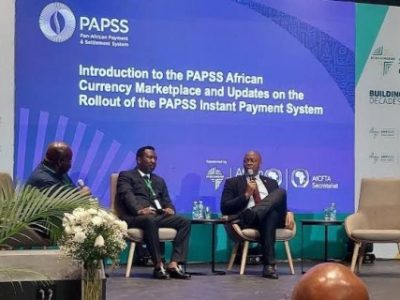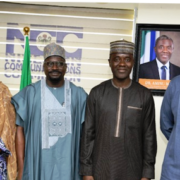Special Report/Ranking of MDAs
READ/DOWNLOAD PDF version of IT EdgeNews Magazine for September 2022
Downsizing MDAs to achieve original goals of development
By Dr. Joe Anuga
The process of governance is not by any means static as the issues requiring the attention of governments are processes that contain innumerable events happening at the same time and continuously creating new outcomes that demand attention. This reality is the basis for the creation of Ministries, Departments and Agencies tasked with specific objectives held together by the areas of focus that they superintend over. These institutions are part of the public bureaucracy whose primary function is to translate government policy into measurable outcomes. These institutions therefore cannot be ignored when the process of governance is being considered as they form the conduit as it were for the concretization of the intentions of people who legitimately hold state power.
The importance of these institutions can however not detract from the fact that they exist to solve problems of concern by the government on behalf of the governed. They are therefore not to be left by decision makers to stray far from the objectives for which they are set up nor should they be allowed to become new problems for the society. The reality however in Nigeria points to the fact that as of September 2022, these MDAs are now clearly a drain on public resources as they replicate each other and in many instances cannot carry out basic functions connected to the objectives behind their creation.
The 2011 Orosonye Report recommended that the government prune down the MDAs from 541 to 161; that it was to abolish 38 agencies; then merge 52 agencies; and finally that the government should revert 14 agencies back to departments in their parent ministries. This was not done and as we move through September 2022, there are now over 800 MDAs in Nigeria. The reality that the Nigerian state has gone from an economy with one of the best Debt to GDP ratios in the world by 2011 to an economy teetering on the brink of a huge Debt Crises in 2022 belies that fact that there is no option but to reduce the size of the government bureaucracy and the overall cost of government. An important key to get it right with regards to the downsizing of MDAs in Nigeria is to take into cognizance how efficient specific MDAs are. Those that are able to fulfill the objectives they were set up to meet and in the process generate resources for the government clearly prove that they are efficient. Those that creatively engage with the issues concerning the objectives of their existence to the point that they not only approximate Global Best Practices but also generate solutions that create a framework for investment in either human or material capital also show that they are efficient. However those that cannot even self-finance their existence and have become salary occupying ventures not only make human capital redundant but reflect a drain on irreplaceable and valuable material resources and must not be allowed to continue. This Joint Media Report is a humble contribution to the efforts of the President Muhammadu Buhari’s efforts to harness all national resources on behalf of the governed in Nigeria.
Joe Anuga PhD – Baobab People and Economy Magazine
“Digital acceleration or transformation has remained limited in several MDAs despite so much hype about going digital.”
To prune or not to prune down MDAs
Whether to scrap or merge some Federal Government’s Ministries, Departments and Agencies (MDAs) has remained a major debate in the face of dwindling government revenue, Nigeria’s rapid shift to a digital economy, and sturdy perception that many MDAs are unnecessary, even duplicitous.
Digital acceleration or transformation has remained limited in several MDAs despite so much hype about going digital or even leveraging technology to achieve some of their statutory mandates.
The term MDAs refers to Federal Government parastatals, commissions and agencies (statutory and non-statutory). This joint report has focused only on departments and agencies not their supervisory ministries. There are well over 800 MDAs and only a fraction of these have been covered here. But the coverage offers a fair insight into the state of affairs across the MDAs.
Most MDAs are shy to share information about their operations and practically avoid any form of public scrutiny contrary to existing statutory obligation and the Freedom of Information Act.
Of the over 800 MDAs, about 150 were contacted. In the three months of reaching out, less than 60 MDAs made any semblance of effort to respond and only five openly reached out with specific information relating to the focus areas of this Joint Media Report.
What to do with MDAs
What to do with MDAs have occupied every government particularly since the Goodluck Jonathan era with committees and several sub-committees set up between 2014 and 2022 to provide a blueprint on reducing MDAs to manageable a number.
It is interesting that in 2011 when the then President Goodluck Jonathan set up the Presidential Committee on Restructuring and Rationalisation of Federal Government Parastatals, Commissions and Agencies, under the Chairmanship of Mr. Steve Oronsaye, there were about 541 Federal Government parastatals, commissions and agencies (statutory and non-statutory); since then while government dithered over the committee report, it did exactly the opposite of the recommendation of the Oronsaye’s submission that government should reduce MDAs to 161; abolish 38 agencies; merge 52 agencies; and revert 14 agencies back to departments in their parent ministries.
Since 2015, new MDAs have been created and the number has grown to above 800 to further worsen government overheads and practically forcing government to return to the original goal of shrinking the MDAs. Between June 2022 and August, several sub-committees have sat to review the previous White Paper of cutting down on MDAs.
It would appear government is now determined to implement the 2011 Oronsaye’s Report and the submissions of subsequent sub-committees including the more recent Ebele Okeke Committee that was constituted to draft a White Paper on the Amal Pepple Committee report on new Parastatals, Agencies and Commissions created between 2012 and 2021.
It is clear that government is intent on implementing the recommendations of these committees not because it necessarily desires to exercise the willpower but because the chicken has come to roost. Government is broke.
The Minister of Finance, Budget and National Planning, Mrs. Zainab Ahmed, during a recent ‘National Policy Dialogue on Corruption and Cost of Governance in Nigeria’ in Abuja, stressed government’s intention to prune down MDAs in order to reduce the cost of governance even as revenue dips.
Even the House of Representatives has already set up a committee to review the status of MDAs in order to establish areas of conflict and duplications.
The reality is that government can no longer fund many MDAs and if it does not act fast enough, its salary and wage bills will become dangerously unachievable. Government has come to the ultimate realisation that there is no better time than now to keep only self-funding MDAs so as to free funds for much-needed capital projects across the country.
Recognition/Ranking Indices
MDAs have several issues that weaken their capacity to deliver on their statutory mandate. Many MDAs certainly need to be reworked, merged or scrapped. Government will set this process in motion when it finally begins to implement recommendations of the committees set up to address this.
This Special Joint Report on MDAs and Ranking was based on the following:
- Digital Presence: Indices of digital transformation – depth and frequency of digital/ online interactions via web or mobile to advance the mandate of your MDA.
- Number/depth of projects, initiatives, research efforts identifiable with the development goals under President Buhari within your MDA.
- Despite challenges, how MDA’s KPIs/ milestones have measured up to their Mission, Mandate, Vision, & Goals (MMVG)
- Impact of all these projects, initiatives, research efforts on people and environment
Many of the MDAs’ websites are uninformative, lacking basic data on their activities and merely serve as poor notice boards for out-of-date press statements. In addition, they have poor navigation and queries do not get responses.
Only few MDAs have effective websites that strengthen “institutional credibility and brand, improve user satisfaction, and save time and money in terms of speed, download and navigation.
The websites of NCC (https://www.ncc.gov.ng/); the newly reworked NADDC (https://naddc.gov.ng/); NIMC (https://nimc.gov.ng/); NDPB (https://ndpb.gov.ng/); NITDA (https://nitda.gov.ng/); NEPC (https://nepc.gov.ng/); and NIPC (https://www.nipc.gov.ng/) were notably exciting with loads of information/content; good aesthetic outlays with robust security; and active in terms of responding to query.
Many MDAs are not so forthcoming on projects, initiatives, research efforts that could be identifiable with their development goals under President Buhari. Many complain of lack of fund to execute their projects and do more than pay staff salaries; or simply put have become agency for ‘salaries collection’. The results are that many of the MDAs have little or no impact and merely exist as government agencies.































